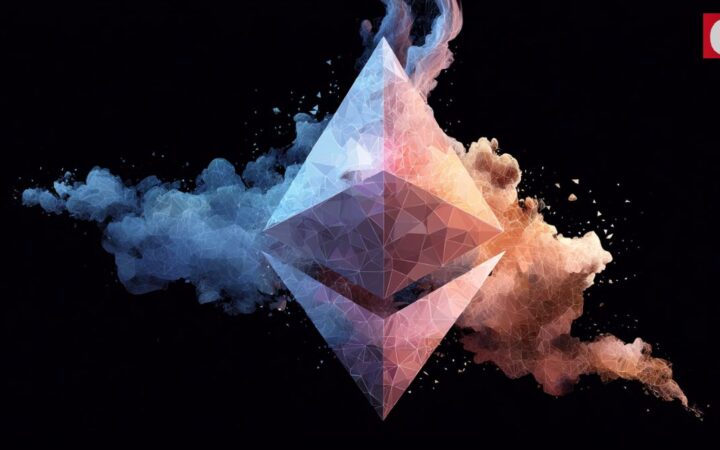In less than a week, OPEN, the governance tokens of the OpenDAO protocol, will launch as per an update on Nov 12. The release will allow users to purchase the ERC-20 token from Uniswap and Cash Box.
Uniswap’s liquidity will be provided by Cashbox Liquidity Providers (LPs). Those with allocation will receive tokens 24 hours before the official listing.
DeFi’s Value Proposition
Decentralized Finance (DeFi) is currently on an uptrend. Backing the stellar performance of the sub-sector’s tokens are the value proposition presented by some of Ethereum’s leading protocols. A BTC Peers report shows that DeFi is transforming online businesses.
Broadly, DeFi encompasses lending, derivatives, insurance, swapping, and DEXes. Currently, a big part of assets under management by open finance dApps are locked up and managed by lending dApps. According to trackers, Maker is the most dominant dApp, locking over $2.4 billion worth of assets.
Despite the potential of DeFi, its upside is capped. Liquidity is drawn solely from within the Ethereum ecosystem. Its market cap is over $57 billion at the time of writing. Its native currency ETH is now trading at over $500, adding 201 percent year-to-date.
The success of ETH prices has a direct effect on DeFi tokens. Their positive correlation means tokens of protocols benefit as the tide rises.
OPEN Governance Token Launching on November 26
Therefore, the launch of OPEN tokens on Nov 26 may be timely for investors. Beyond that, there are specific fundamentals that may support prices.
One of them is their mission. OpenDAO has the infrastructure ready to bridge real-world assets to the cryptoverse. In their protocol, valuable and physical assets like shares, real estate, invoices, and others can be collateral for loans and for earning OPEN tokens.
The tokenization of real-world assets like Tesla and Facebook stocks, or prime real estate properties enable fractional ownership therefore making them liquid.
The Cashbox Bridge
The project’s lynchpin is the Cash Box. It not only acts as a linkage but evolves projects’ crowdfunding. Cash Box is where an asset’s fair price can be gauged. This way, a pricing mechanism, an order book, that is purely decentralized and trustless emerges. The Cash Box is where users can pool liquid stablecoins (cash) which in turn acts as a perpetual counterparty for a real-world asset funded by Liquidity Providers (LPs).
Through the Cashbox, OpenDAO forecasts the DeFi’s Total Value Locked (TVL) to increase a hundred folds. It shall improve the sector whose operations, they say, resemble a casino. With more liquidity, there are more opportunities for investors.
There are several mechanisms used by the protocol to recover funds in case the borrower defaults. If the collateral is online, a sell order can be triggered via APIs for cash that’s then reimbursed to LPs depending on their share amounts.
On the other hand, real estate and other physical assets can be sold by an approved Special Purpose Vehicle (SPV) who owns and tokenizes the asset. Tokens are then sold to LPs using DAI. This requires the disclosure of personal information.
OpenDAO Incentives
Funds recovered are distributed to LPs. Fractional owners can stake their cash box tokens and earn OPEN rewards, and even borrow loans by presenting their tokens to the oUSD (OpenDAO’s stablecoin backed by physical assets) minter, or the OTL.
Besides owning the underlying asset, LPs earn trading fees. Whenever they stake their Cash Box tokens, they receive OPEN governance tokens as an incentive for liquidity provision. Lenders of OpenDAO’s OPM will also earn OPEN tokens from Nov 26.
OpenDAO has acquired a property in Melbourne, Australia, and tokenized its shares. Purchase of the Australian Real Estate Investment Trust (AREIT) is ongoing. The launch of OPEN governance tokens on Nov 26 via Cashbox and Uniswap could therefore provide an opportunity for investors to take control of a protocol aiming to link real-world assets to the cryptoverse in a bullish DeFi market.
Disclaimer: Coinspeaker is committed to providing unbiased and transparent reporting. This article aims to deliver accurate and timely information but should not be taken as financial or investment advice. Since market conditions can change rapidly, we encourage you to verify information on your own and consult with a professional before making any decisions based on this content.

Founder and editor at BTC PEERS. Andrey writes about financial experiments, DeFi, cryptocurrency, and blockchain.





